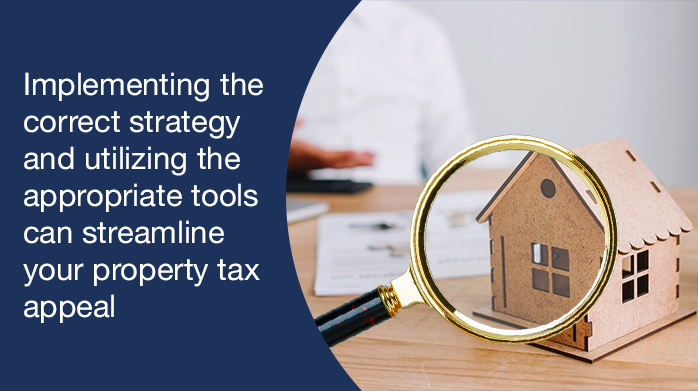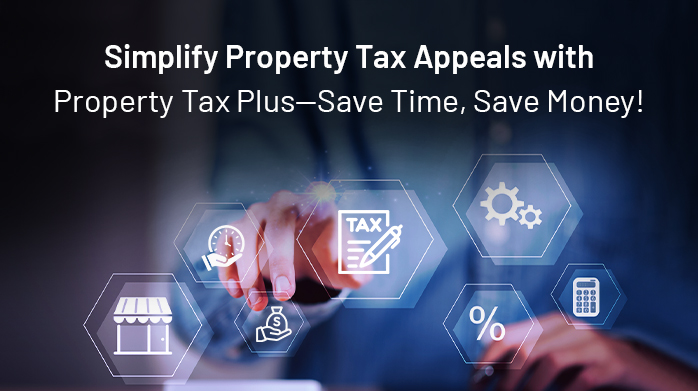Received a property tax assessment notice that’s too high? Don’t panic—you have the power to challenge it. With the right strategy and tools, you can manage your property tax appeal effectively and reduce your tax burden. In this blog, we’ll guide you through the property tax appeal process, introduce powerful tax appeal management software, and share top tips to win your appeal. Let’s dive in and take control of your property taxes.
Why Should You Consider a Property Tax Appeal?
Reasons to appeal property tax assessment can vary, but here are some common scenarios:
1. Incorrect Property Information: If the assessment notice contains errors in property details.
2. Comparable Properties: If similar properties in your area are assessed at lower values or last year value of your property was lower.
3. Market Fluctuations: Changes in the real estate market that are not reflected in your assessment.
4. Recent Purchases: If you’ve recently bought the property for less than its assessed value.
Steps to File a Property Tax Appeal
1. Review the Document Checklist and Upload Missing Documents: This initial step ensures that all necessary documentation is complete and uploaded. It’s crucial for establishing a solid foundation for the appeal process.
2. Change the Status to ‘Information Received: Once all documents are reviewed and deemed complete, the status is updated to “Information Received.” This status signifies that the preliminary requirements are met, and the case is ready to proceed.
3. Update the Target Values and Change the Status to ‘Analysis Completed: This step involves analyzing the information provided and updating necessary values based on findings. Changing the status to “Analysis Completed” indicates that the analytical review of the appeal has been concluded.
4. Set a Hearing Date and Update the Status to ‘Hearing Scheduled: After analysis, a hearing date is set, and the appeal status is updated to “Hearing Scheduled.” This step marks the transition from review and preparation to formal proceedings.
5. Download all Appeal Documents to Create a Package: This involves compiling all relevant documents into a single package, likely for use in the hearing. It ensures that all information is organized and readily accessible for presentation or review during the hearing.
6. Update the Final Values of the Appeal and Change Status to Appeal Finalized: The final step involves updating the appeal with its conclusive values and changing the status to “Appeal Finalized.” This status indicates that the appeal process is complete and the final decision has been recorded.
Each of these steps is critical for the systematic processing of appeals, ensuring that each phase is properly executed and documented. This structured approach helps maintain transparency and efficiency, essential for effective tax appeal management.
Understanding the Appeal Process
The appeal process can be complex, but breaking it down into manageable steps can help. Here’s how a comprehensive tax appeal management system can streamline this process:
1. Awaiting Information: This initial phase involves the collection of all relevant data and documentation necessary to proceed. Ensuring that all required information is submitted promptly can significantly expedite the process.
2. Information Received: Once the appeal body confirms receipt of the necessary documents, the case moves forward. It’s crucial to verify that nothing is missing to avoid delays.
3. Analysis Completed: In this stage, experts review all submitted information to understand the case’s merits. This analysis is vital as it determines whether the appeal should proceed to a hearing.
4. Hearing Scheduled: If the case warrants further examination, a hearing date is set. This is the opportunity for both parties to present their arguments and evidence directly to the decision-makers.
5. Appeal Finalized: The final decision is made after the hearing. Depending on the outcome, the appeal could be upheld, denied, or sent back for further consideration.
This breakdown not only provides clarity but also helps manage expectations for those awaiting an appeal decision.
How Tax Appeal Software Can Help?
Utilizing tax appeal software can significantly ease the process of managing your property tax appeal. Here’s how it works:
– Centralized Document Management: Access and manage all appeal documents in one place.
– Automated Notifications: Get alerts for important deadlines and updates.
– Comprehensive Analysis Tools: Use built-in tools to compare current and previous values, identify discrepancies, and prepare your case.
How can Property Tax Plus help?
One of the best tools available for handling property tax appeals is the Property Tax Plus. This software offers:
– Appeal Letters Repository: A centralized place for all petitions, allowing clients to see the status of their appeals easily.
– Detailed Tracking: Track the progress of appeals from initiation to final resolution.
– Value Negotiation: Compare the notice value, target value, and final value to ensure you’re getting the best possible outcome.
Key Questions to Ask
To make sure you’re on the right track with your property tax appeal, consider these questions:
– Have I verified the details on my property tax assessment notice?
– Do I have sufficient evidence to support my appeal?
– Am I aware of the deadlines and procedures for filing an appeal in my area?
– Can tax appeal software help streamline my appeal process?
– How can Property Tax Plus enhance my appeal management?
-How can Property Tax Plus export details in excel sheets?
Challenging your property tax assessment can be a daunting task, but with the right approach and tools, it can be a straightforward process. By understanding the reasons to appeal property tax assessment, following a structured process, and leveraging tax appeal management software like Property Tax Plus, you can increase your chances of a successful appeal. Remember, the key to winning your appeal lies in thorough preparation, timely submission, and effective management.
If you’re ready to take control of your property tax appeals, consider integrating tax appeal software into your strategy today.







